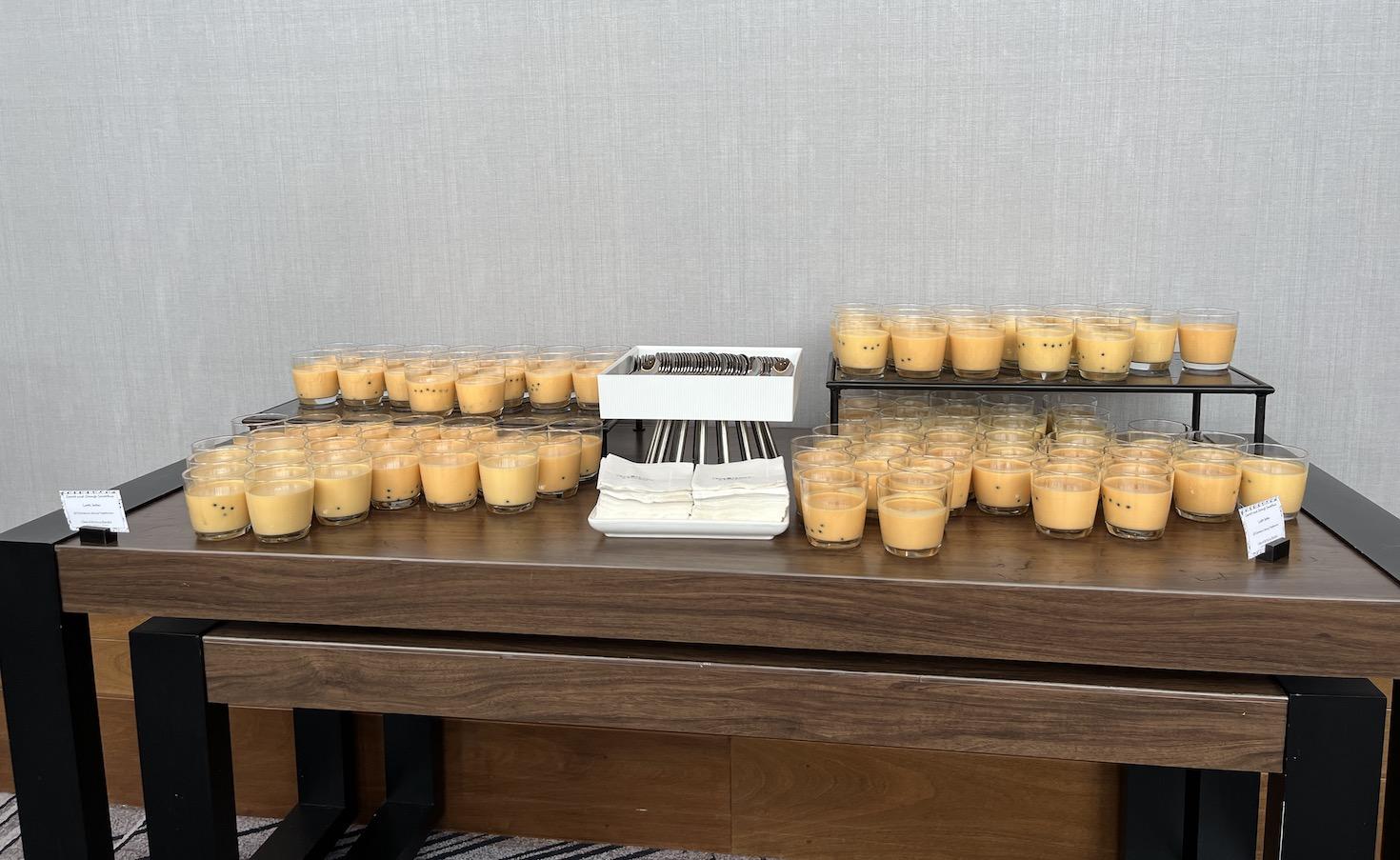At GreenBiz we know we have to walk the talk when it comes to sustainability — we put on sustainability conferences, after all.
Over the years we have learned a lot about how to serve a sustainable food menu that is tasty, keeps waste low and can be enjoyed by all, while also giving attendees a push to try new plant-based lower-emission things. It has also been cost-effective; understanding eating habits and decreasing food quantities saves money no matter what.
In 2015 we stopped serving red meat, started donating surplus food to local community organizations and eliminated single-serving and plastic-packaged foods. And in 2022, we took a big swing, serving a 75 percent vegan and 25 percent vegetarian menu. (This year we reintroduced white meat and fish for balance and accessibility. More on that later.)
Here is our step-by-step guide to making the food and beverage service at your conference or corporate event more sustainable, without sacrificing taste.
Step 1: Pre-portion food and bring it out in shifts
Try to keep as much food in the kitchen as possible by pre-portioning the food and bringing it out gradually instead of all out at the same time for a "serve yourself" model.
For example, you’ll often see a tub of yogurt and a giant container of granola available at event buffets so attendees can self-serve. These bowls are rarely finished and the remainder has to be thrown away. (Unfortunately, due to food regulations, once food is taken out of the kitchen it can no longer be reused or donated.)
So ask the kitchen to plate the food in smaller batches and replenish as needed. This way, any leftovers can remain in the kitchen to be donated.
Step 2: Use smaller serving platters
The hospitality industry is incentivized to ensure abundance. A crowded table with five types of pastries, four jugs of salad dressings, a dozen condiments and an overflowing cheese board may look good, but it almost always results in food being overserved.
The easiest way to address this is to use smaller serving trays and bowls. Our own food waste audit at our event in June found that downsizing the serving vessels for syrup and butter led to a 60 percent reduction in the waste of each. It also saved the venue about $10,000.
Step 3: Put the meat and cheese on the side
One practice for nudging eaters toward plant-based options is to serve meals deconstructed so the default option is plant-based. If attendees want to add animal-based and allergen-prone products, such as cheese or tree nuts for a salad, those can be available on the side. This is also great for general inclusivity, to make it easier for those with dietary restrictions or allergies.
Downsizing the serving vessels for syrup and butter led to a 60% reduction in the waste of each.
That said, make sure to follow step 1 (pre-portion) and step 2 (smaller containers) to avoid an increase in leftovers when the accouterments are not used.
Step 4: Get rid of single use plastic
Plastic water cups? No more. Paper coffee cups? Nope, use mugs. For meals, switch to real plates and real silverware. Is it snack time? Instead of individually plastic-wrapped bags of nuts or treats, use bulk items that can be doled out into cups and bowls. Work with your venue to provide tables where attendees can leave used cups and plates that get whisked back to the kitchen for washing.
Step 5: Find the right partners
You’ll be asking your venue to make huge shifts that aren’t the norm. Find partners who can relay their knowledge of plant-based ingredients or waste reduction strategies, such as Greener by Default, which has helped us with lower-carbon menu design. Work with plant-based brands to make ingredients available so venue teams don’t have to find new suppliers for new ingredients. For VERGE 23 in San Jose, California, next week, for instance, we’re partnering with plant-based food products from Just Eggs and Akua.
Step 6: Work closely with venue coordinators and food service partners
Start to collaborate early with your venue coordinators and food service partners. Sustainable conference food is not just about ordering vegan and gluten-free options, but making sure the taste quality is up to the expectations of your attendees. After mixed results on the quality of vegan and gluten-free options at our own previous events, we learned that we had to play to our venue’s strengths.
Learn what your venue is confident in making. Most venues are happy to try something new, but prioritizing menu items they are comfortable with will help maintain the taste quality attendees expect.
Step 7: Offer trainings
Plant-based ingredients and recipes might be new and unfamiliar ground for a venue’s kitchen, or waste-removal staffers. Hire an outside expert such as the Physicians Committee for Responsible Medicine (we’ve worked with them at the San Jose Convention Center) to come to the venue kitchen and help everyone get better acquainted with the ingredients, or Astrapto (we’ve worked with them at the Hyatt Regency in Seattle) to explain best practices for limiting plant-based food waste.
Step 8: Don’t push it
From our experience, many attendees appreciate moves to a largely plant-based menu. But we learned an important lesson, too: Don’t push unfamiliar vegan foods too far, as a sub-par culinary experience may turn a person off from trying these types of options in the future.
It’s OK if progress is not linear. And execution does not have to be perfect to deliver improvements and lessons.


